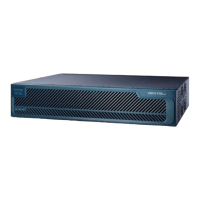PurposeCommand or Action
◦
Entering no exits the configuration session and
returns the router to EXEC mode without
committing the configuration changes.
◦
Entering cancel leaves the router in the current
configuration session without exiting or committing
the configuration changes.
•
Use the commit command to save the configuration
changes to the running configuration file and remain
within the configuration session.
Enters the address family IPv4 configuration mode.address-family ipv4
Example:
RP/0/RP0/CPU0:router(config-cgn-tunnel-6rd)#
address-family ipv4
Step 5
Specifies the ServiceApp on which IPv4 traffic enters and
leaves.
interface ServiceApp41
Example:
RP/0/RP0/CPU0:router(config-cgn-tunnel-6rd-afi)#
interface ServiceApp41
Step 6
Enters the address family IPv6 configuration mode.address-family ipv6
Example:
RP/0/RP0/CPU0:router(config-cgn-6rd-afi)#
address-family ipv6
Step 7
Specifies the ServiceApp on which IPv6 traffic enters and
leaves.
interface ServiceApp61
Example:
RP/0/RP0/CPU0:router(config-cgn-6rd-afi)#
interface ServiceApp61
Step 8
Exits the address family configuration mode.exit
Example:
RP/0/RP0/CPU0:router(config-cgn-6rd-afi)# exit
RP/0/RP0/CPU0:router(config-cgn-6rd)#
Step 9
Specifies the ServiceApp on which IPv6 traffic enters and
leaves.
datapath-test
Example:
RP/0/RP0/CPU0:router(config-cgn-6rd)#
datapath-test
Step 10
Saves configuration changes.end or commit
Step 11
Example:
RP/0/RP0/CPU0:router(config-cgn-tunnel-v6rd)#
end
Cisco IOS XR Carrier Grade NAT Configuration Guide for the Cisco CRS Router, Release 5.2.x
56 OL-32659-01
Implementing Carrier Grade NAT on Cisco IOS XR Software
Configuring the Policy Functions for the Carrier Grade NAT

